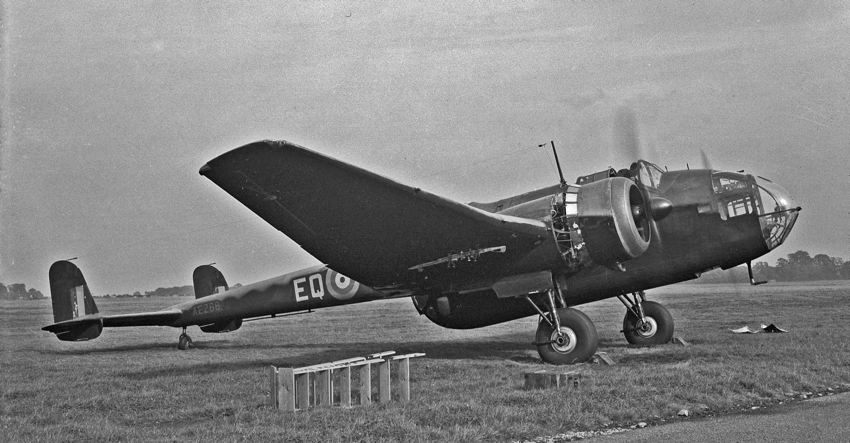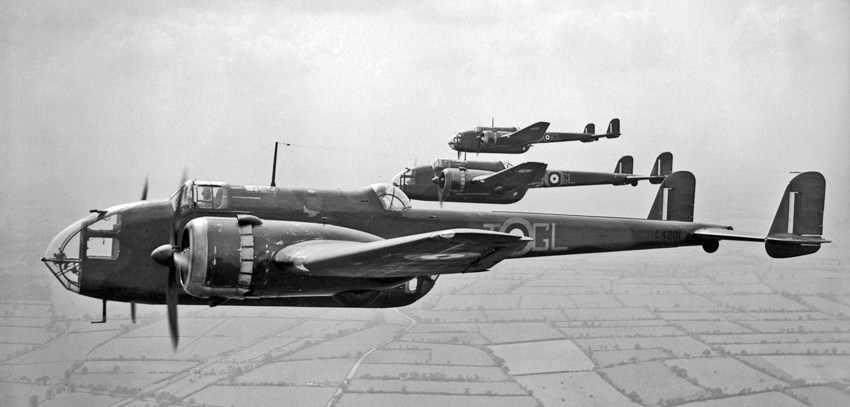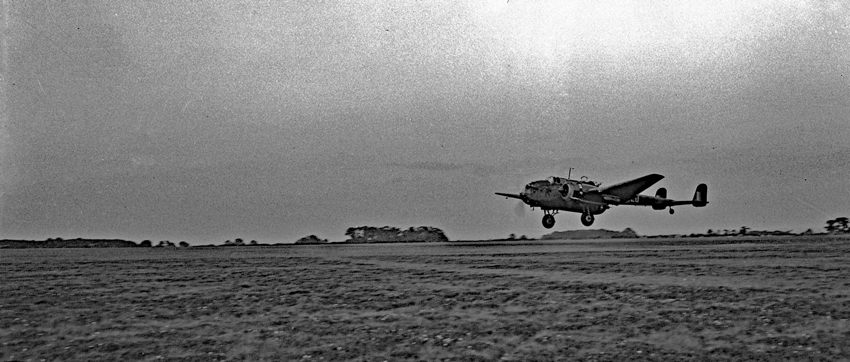 Bomber Command
Bomber Command  |
Aircrew Chronicles
|
Aircrew Losses
|
Nose Art
|
BCATP
|
Lancaster
|
Media
|
Aircrew Chronicles
|
Aircrew Losses
|
Nose Art
|
BCATP
|
Lancaster
|
Media
 Bomber Command
Bomber Command  |
Aircrew Chronicles
|
Aircrew Losses
|
Nose Art
|
BCATP
|
Lancaster
|
Media
|
Aircrew Chronicles
|
Aircrew Losses
|
Nose Art
|
BCATP
|
Lancaster
|
Media

Sleek and maneuverable, the Handley-Page Hampden had a distinctive, deep fuselage which gracefully tapered to a slender tail boom. It was said to have been, "a great aircraft to fly with excellent visibility from the cockpit, and responsive, superior handling characteristics even at low speeds."" It had a good range and could carry a respectable bomb load. However, it was very cold and was not fitted with powered gun turrets like the other twin-engined bombers. As well, the Hampden became known as the "Flying Suitcase" because of its cramped crew conditions.
The Hampden entered service in 1938 and eight squadrons were operational at the beginning of the war. They were in action immediately, raiding enemy naval installations and ships until the daylight formations began encountering enemy fighters. Casualties became so heavy the Hampden was taken off operations, re-equipped with better armour and armament, and then used only at night.

The aircraft did find a niche for itself in Bomber Command as an ideal platform for placing aerial mines in the North Sea. Many 'Gardening' sorties were flown over enemy waters by Hampdens and they continued in this role for the remainder of its service.
Although withdrawn from Bomber Command in 1942, Hampdens operated with Coastal Command through 1943 as a long-range torpedo bomber.

During 1941 and 1942, the RCAF equipped 408 and 420 Squadrons with Hampdens. During its early years as a Coastal Command squadron, 415 Squadron flew Hampdens as well.
160 Hampdens were manufactured in Canada, the first making its first flight in August 1940. By October 1940, Canadian production had risen to fifteen aircraft per month. The majority of the Canadian-built Hampdens were shipped by sea to Great Britain where they saw combat. Many of these were flown back to Canada to Patricia Bay (Victoria Airport) B.C., to serve with No. 32 Operational Training Unit and used for bombing and gunnery training. [Paul Squires]
